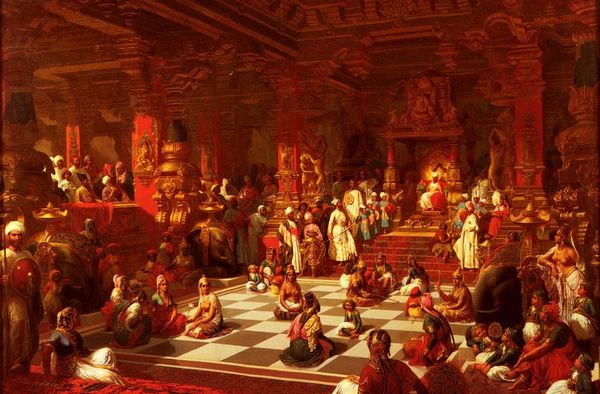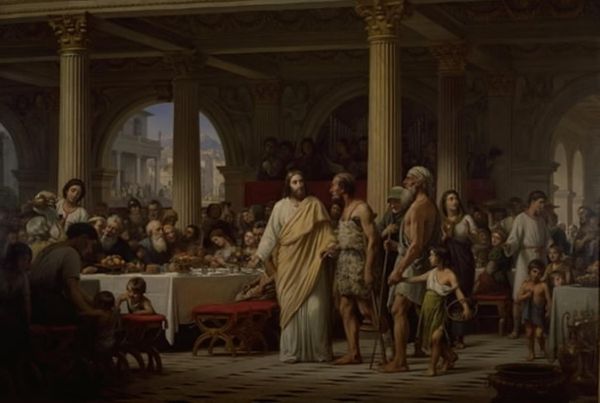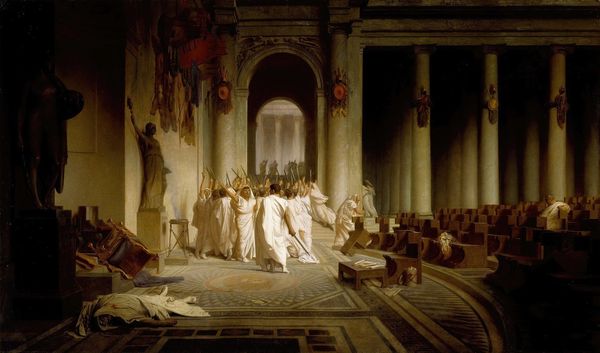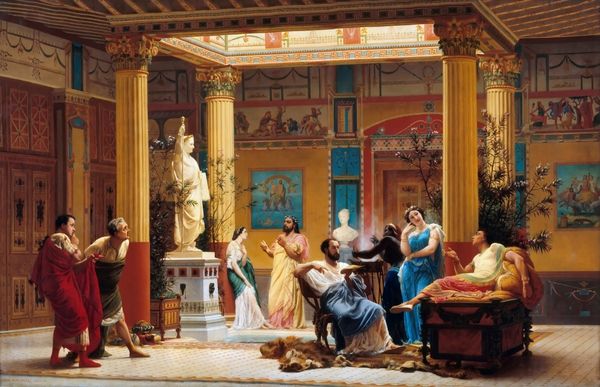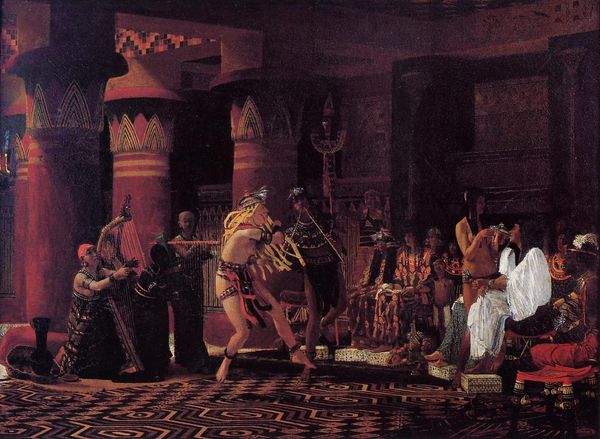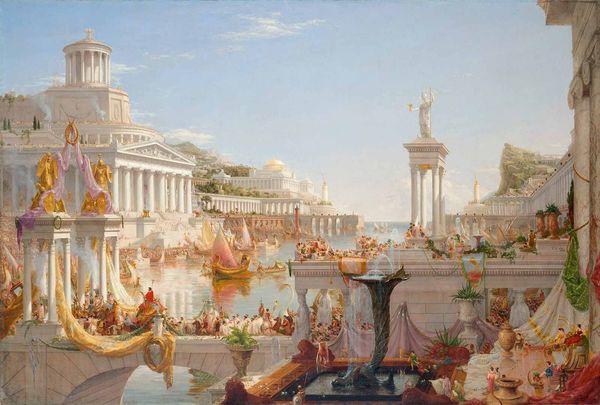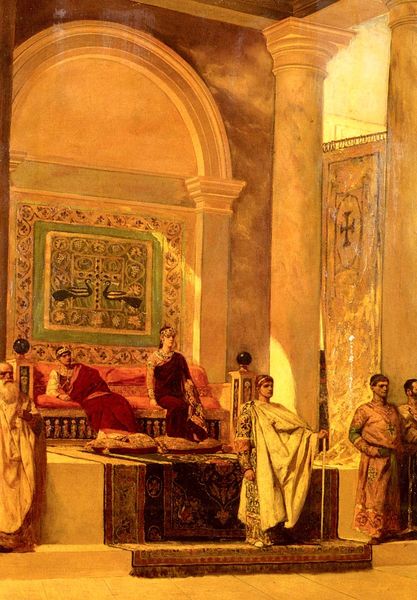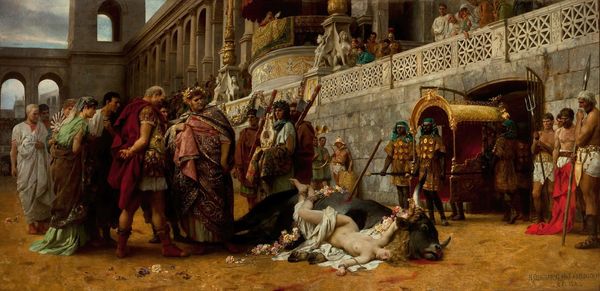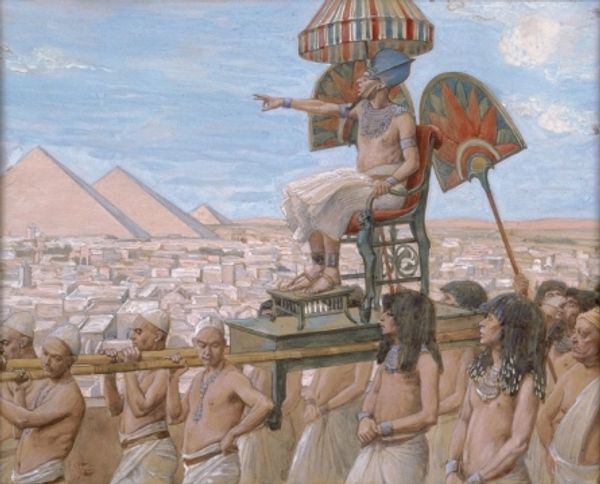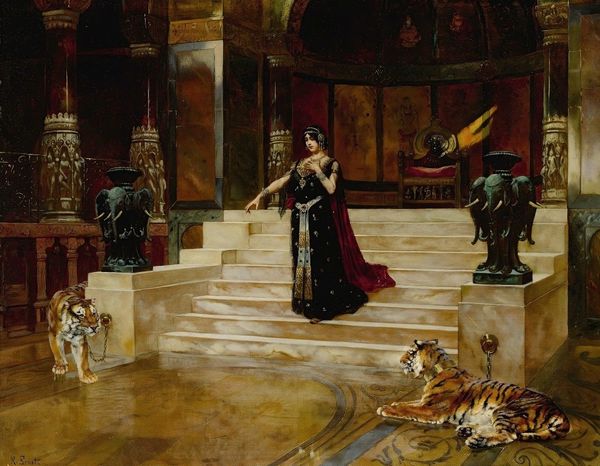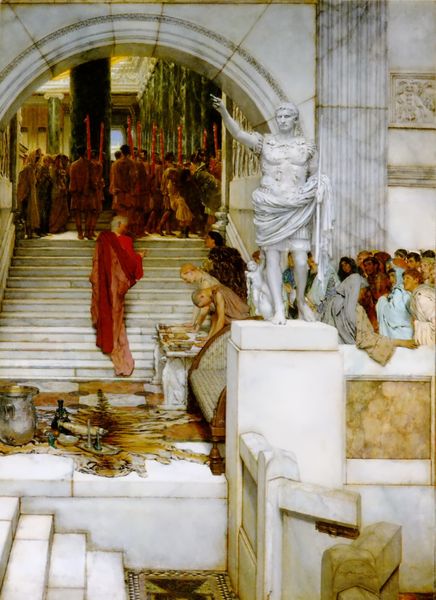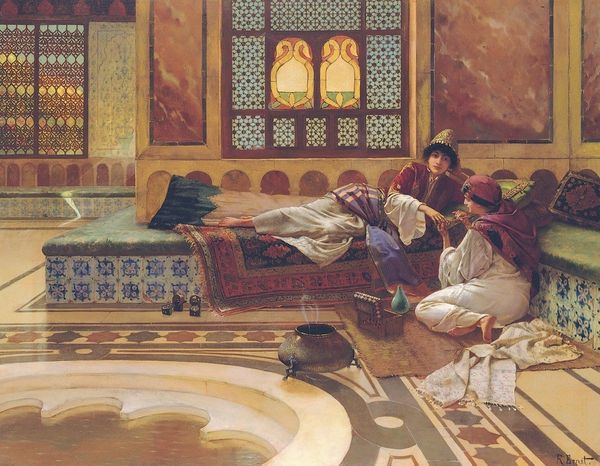
painting, oil-paint
#
narrative-art
#
painting
#
oil-paint
#
cultural heritage
#
group-portraits
#
orientalism
#
history-painting
#
academic-art
#
realism
Copyright: Public Domain: Artvee
Curator: Edward John Poynter's "The Visit of the Queen of Sheba to King Solomon," completed in 1890. Editor: Wow, what a spectacle! It feels very stagey to me, like a grand theatrical production with rich costumes and an elaborate set. Curator: Indeed. Poynter’s approach demonstrates a profound engagement with academic art, emphasizing realism through meticulously rendered detail and perspective. Observe the sheer density of figures, each seemingly defined in his particularity. Editor: It definitely evokes a sense of the socio-political atmosphere of the late 19th century, a time when such grand historical narratives were employed to reinforce ideas about power, legitimacy, and Western perceptions of the Orient. Orientalism is strong here, portraying the East as exotic and subservient, which tells us so much about the artist’s colonial context and biases. Curator: Exactly. There's a deliberate organization of pictorial space. Note how Poynter uses the architectural elements, those imposing red pillars and precisely calculated recession, to lead the eye, orchestrating the movement from Sheba to Solomon. Also the chromatic scheme is a brilliant balance of reds, golds, and blues to convey opulence. Editor: And consider how the inclusion of those peacock statues emphasizes the performative aspects of royalty, both of Solomon's constructed persona of wisdom and of the queen's own display of regal reverence. Beyond its aesthetic merits, this work gives insight into Victorian society and its complex engagement with themes of civilization, empire, and cross-cultural encounters. Curator: Yes, the visual and the conceptual are deeply intertwined here. As an orientalist painting, we should not dismiss its undeniable role as an historical document representing power structures, artistic capabilities, and its place in cultural representation. Editor: Thinking about its positionality allows a deeper engagement than just aesthetics. Thanks for opening my eyes on such historical details.
Comments
No comments
Be the first to comment and join the conversation on the ultimate creative platform.
